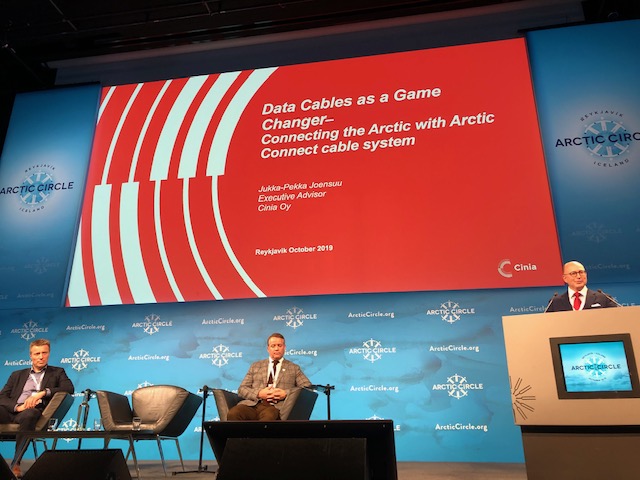
AEC Plenary on Connectivity in the Arctic: Data cables as gamechangers in the Arctic
The Arctic is uniquely positioned for data center development. Despite that the Arctic has dispersed population, harsh climate and lower rates of broadband adoption than compared to non-Arctic regions. The abundance of green energy and cold climate are our greatest advantages when it comes to establishing data centers. In the same time the Arctic struggles to access to affordable and stable broadband, the rural parts of the Arctic will be left behind of the development brought by digitalization if this continues.
“Long term thinking is needed and we also need public private partnerships. This is crucial for the development of remote Arctic connectivity”, says CEO Dag Kjetil Hansen of Bredbåndsfylket Troms.
If the plans for improved connectivity are realized, in or through the Arctic, it can be a gamechanger not just for the region, but also globally. The Arctic has a geographic advantage: uniting three continents, it provides the shortest link for data cables, the trading routes of digital economy. One of the current major plans for improved connectivity in the Arctic is the Arctic Connect project. “Data centers in Nordics could support data centers in Asia. Much easier to carry data than energy”, says Jukka-Pekka Joensuu of Cinia, Finland
If realized, this project will unite Europe to Asia across the North East Passage. “Concept of remoteness has changed with development of broadband. Backbone infrastructure is coming to the Arctic”, says Heidar Gudjonsson, AEC Chair
The presentations were available here:
Jukka Pekka Joensuu, Cinia (https://bit.ly/32ahuyy)
Dag Kjetil Hansen, Bredbåndsfylket Troms AS (https://bit.ly/35z6VqQ)
Summing up and dialogue https://bit.ly/2Magd58
For more information
AEC Telecommunication Infrastructure Working Group’s report “Arctic Broadband – Recommendations for an Interconnected Arctic”
The AEC Connectivity Working Group.